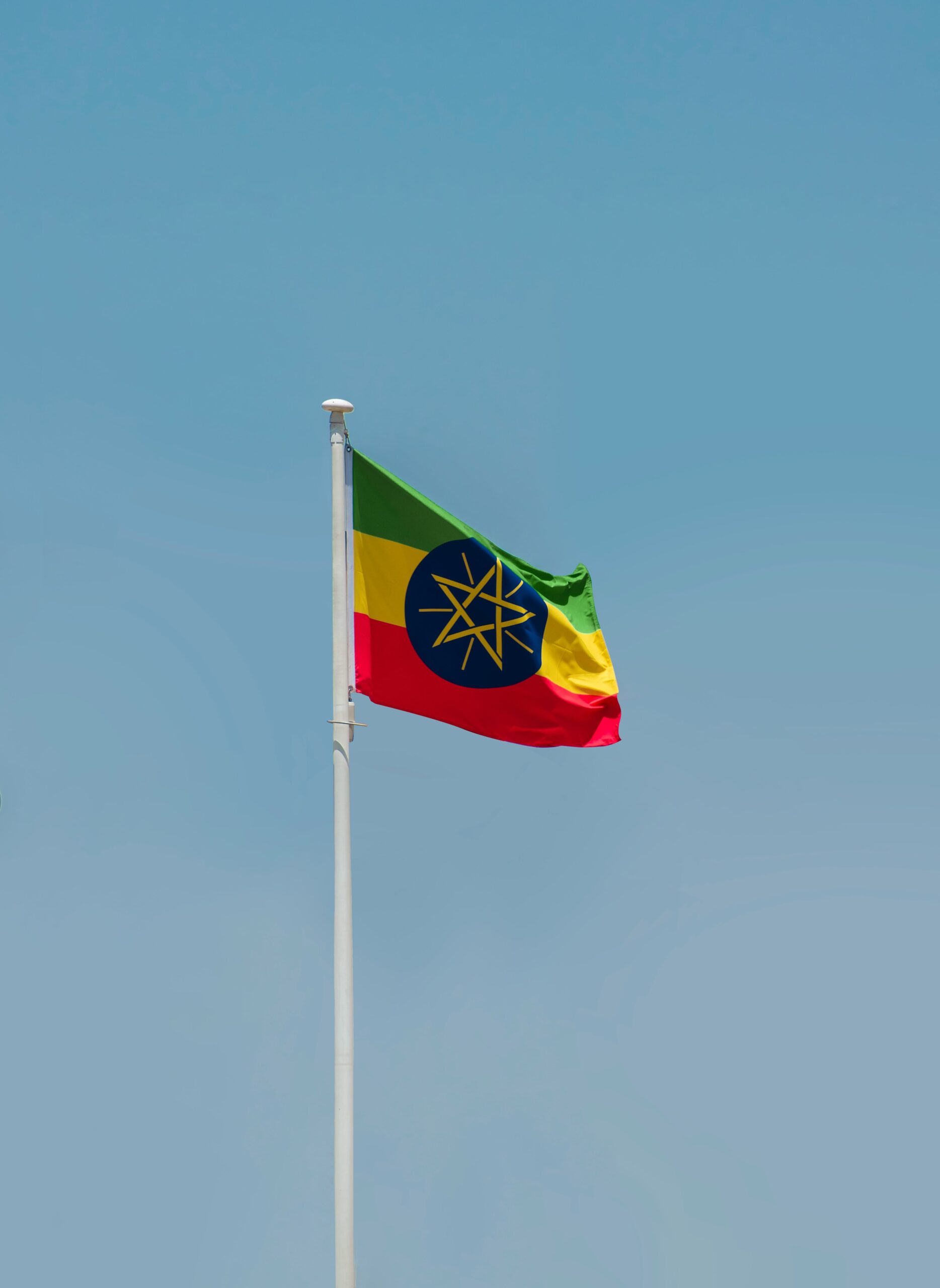What Is The Healthcare System Like In Ethiopia?
Overview of the Healthcare System in Ethiopia
The healthcare system in Ethiopia faces various challenges despite ongoing efforts to improve its services and accessibility. The country’s healthcare system is primarily structured into three tiers: primary, secondary, and tertiary levels. The primary level focuses on health promotion and disease prevention, typically delivered through health centers and health posts at the community level. These facilities are crucial in providing basic healthcare services to the majority of the population, particularly in rural areas.
At the secondary level are district hospitals, which offer more specialized services and cater to a larger population. These hospitals are equipped with essential medical equipment and healthcare professionals to manage common health issues and minor surgeries. The tertiary level consists of specialized hospitals located in major cities, offering advanced medical services, specialized treatments, and facilities for complex surgeries and procedures.
Despite progress in recent years, Ethiopia still faces challenges in its healthcare system, including limited access to healthcare services in rural areas, a shortage of trained healthcare professionals, inadequate infrastructure and medical equipment, and disparities in healthcare quality between urban and rural areas. These challenges contribute to gaps in healthcare accessibility and quality across different regions of the country.
Moreover, healthcare financing remains a significant issue in Ethiopia, with out-of-pocket payments comprising a substantial portion of healthcare expenditures. This poses a barrier to healthcare access for many Ethiopians, particularly those living below the poverty line. To address this, the government has been implementing initiatives to expand health insurance coverage and reduce the financial burden on individuals seeking healthcare services.
While the healthcare system in Ethiopia has made strides in improving healthcare services and accessibility, significant challenges persist. Addressing these challenges will require sustained efforts to strengthen infrastructure, enhance healthcare workforce capacity, improve healthcare financing mechanisms, and bridge the gap between urban and rural healthcare services. Only through comprehensive reforms and targeted investments can Ethiopia achieve a more equitable and effective healthcare system for all its citizens.
Accessibility to Healthcare Services in Ethiopia: Improving the Health Landscape
Ethiopia, a country known for its rich cultural heritage and diverse landscapes, faces challenges in providing accessible healthcare services to its population. With a healthcare system that is primarily publicly funded, access to quality healthcare remains a significant concern for many Ethiopians. Despite efforts made by the government to improve the healthcare infrastructure, there are still barriers that prevent some individuals from receiving the care they need in a timely manner.
One of the key challenges to accessing healthcare services in Ethiopia is the geographical distribution of healthcare facilities. The majority of healthcare facilities are concentrated in urban areas, leaving those in rural and remote regions underserved. This geographic disparity often results in limited access to essential healthcare services for individuals living in rural areas, leading to poor health outcomes and increased mortality rates.
Moreover, financial barriers pose a significant obstacle to healthcare access in Ethiopia. While the government has made strides in expanding health insurance coverage to its citizens, out-of-pocket expenses for healthcare services remain a burden for many Ethiopians. High poverty rates make it challenging for individuals to afford necessary medical treatments, medications, and preventative care, further exacerbating health disparities across the country.
In addition to geographic and financial barriers, there is also a shortage of healthcare professionals in Ethiopia. The uneven distribution of healthcare workers, with a higher concentration in urban areas, makes it difficult for rural communities to access skilled medical care. This shortage not only contributes to long wait times and overcrowded facilities but also hinders the quality of care provided to patients.
To address these challenges and improve accessibility to healthcare services, the Ethiopian government has implemented various initiatives. These include the expansion of primary healthcare services, the training and deployment of community health workers in rural areas, and the development of mobile health clinics to reach underserved populations. Additionally, the government has increased investments in healthcare infrastructure and technology to enhance the quality of care provided across the country.
While Ethiopia continues to face challenges in ensuring accessible healthcare services for its population, concerted efforts are being made to improve the health landscape. By addressing geographical disparities, financial barriers, and healthcare workforce shortages, Ethiopia aims to enhance healthcare access and quality for all its citizens, ultimately contributing to better health outcomes and overall well-being.
Challenges and Limitations of the Healthcare System in Ethiopia
The healthcare system in Ethiopia faces several challenges and limitations that impact the overall quality and accessibility of healthcare services in the country. One of the primary challenges is the insufficient infrastructure and resources in the healthcare sector. Many health facilities in rural areas lack basic medical equipment, supplies, and qualified healthcare professionals, making it difficult to provide adequate care to the population.
Another significant challenge is the limited funding allocated to the healthcare system. The Ethiopian government spends a relatively small percentage of its GDP on healthcare, which hinders the ability to improve healthcare infrastructure, expand services, and provide essential medical supplies. This limited budget also affects the salaries and training of healthcare workers, leading to retention issues and a shortage of skilled medical staff.
Furthermore, the unequal distribution of healthcare services between urban and rural areas poses a significant challenge. While urban centers like Addis Ababa have relatively well-equipped hospitals and clinics, rural areas often lack even basic healthcare facilities. This disparity in access to healthcare services results in many rural residents facing barriers to receiving timely and quality medical care.
In addition to infrastructure and funding challenges, Ethiopia’s healthcare system also struggles with issues related to communicable diseases such as malaria, tuberculosis, and HIV/AIDS. Limited public health initiatives and preventive care measures contribute to the high prevalence of these diseases, placing a significant burden on the healthcare system and impacting the overall health outcomes of the population.
Moreover, the lack of health education and awareness among the public presents a barrier to improving healthcare outcomes in Ethiopia. Many individuals, especially in rural areas, may not have access to accurate health information or may rely on traditional healing practices due to cultural beliefs and lack of awareness about modern medical treatments. This gap in health literacy hinders efforts to promote preventive care and early intervention for various health conditions.
Addressing these challenges and limitations in the healthcare system in Ethiopia requires a multi-faceted approach that involves increased investment in healthcare infrastructure, resources, and workforce development. By improving access to quality healthcare services, strengthening public health initiatives, and enhancing health education efforts, Ethiopia can work towards building a more effective and equitable healthcare system that meets the needs of its diverse population.
Traditional Healing Practices and their Integration into the Healthcare System in Ethiopia
In Ethiopia, traditional healing practices have a rich history and cultural significance that plays a crucial role in the overall healthcare landscape of the country. Traditional medicine in Ethiopia encompasses a wide range of practices, including herbal medicine, spiritual healing, and rituals that have been passed down through generations. These practices are often deeply rooted in the cultural beliefs and traditions of various ethnic groups across the country.
One of the key aspects of traditional healing practices in Ethiopia is the use of medicinal plants and herbs for treating a variety of ailments. Traditional healers, also known as "dukem" or "qondallas," have extensive knowledge of the healing properties of different plants and use this knowledge to provide remedies for common health issues. In rural areas where access to modern healthcare facilities is limited, traditional healers play a vital role in providing essential healthcare services to the local population.
In recent years, there has been a growing recognition of the importance of integrating traditional healing practices into the formal healthcare system in Ethiopia. The government has taken steps to collaborate with traditional healers and incorporate their knowledge and practices into the national healthcare framework. This integration has the potential to improve healthcare access for the population, especially in remote areas where traditional healers are often the primary healthcare providers.
One of the challenges of integrating traditional healing practices into the healthcare system is the need to ensure that these practices meet modern standards of safety and efficacy. The Ministry of Health in Ethiopia has been working to regulate traditional medicine and ensure that practitioners adhere to certain standards and guidelines. By standardizing and formalizing traditional healing practices, the government aims to enhance the quality of healthcare services provided to the population.
The integration of traditional healing practices into the healthcare system in Ethiopia represents a unique opportunity to combine the strengths of both traditional and modern medicine. By recognizing and incorporating traditional healing practices, Ethiopia is working towards a more holistic and culturally sensitive approach to healthcare that reflects the country’s rich heritage and diverse cultural traditions.
Government Initiatives and Policies to Improve Healthcare in Ethiopia
The government of Ethiopia has been actively engaged in implementing various initiatives and policies to enhance the healthcare system in the country. These efforts have been crucial in addressing the healthcare challenges faced by the population and improving the overall well-being of Ethiopians.
One of the key initiatives that the Ethiopian government has undertaken is the Health Extension Program (HEP). This program focuses on providing essential healthcare services to rural communities by deploying a large number of health extension workers who are trained to deliver basic healthcare services and health education. Through this program, services such as immunizations, prenatal care, and treatment of common illnesses are brought closer to the people, especially in rural and underserved areas.
Furthermore, the government has been working towards strengthening the healthcare infrastructure in the country by building and upgrading healthcare facilities, such as hospitals and health centers. By investing in infrastructure development, the government aims to ensure that every citizen has access to quality healthcare services within a reasonable distance from their place of residence.
In addition to infrastructure development, the Ethiopian government has implemented policies to increase the number of healthcare professionals in the country. This includes initiatives to train and recruit more doctors, nurses, and other healthcare workers to address the shortage of skilled personnel in the healthcare sector. By investing in training programs and improving working conditions for healthcare professionals, the government seeks to enhance the quality of care provided to the population.
Another important policy introduced by the government is the Health Sector Transformation Plan (HSTP). This plan outlines strategic objectives and targets for improving the overall healthcare system in Ethiopia, with a focus on enhancing the quality of care, increasing access to services, and promoting preventive healthcare measures. By setting clear goals and priorities, the HSTP aims to achieve measurable improvements in the health outcomes of the population.
Moreover, the government has been collaborating with international organizations and donor agencies to secure funding and technical assistance for healthcare projects in Ethiopia. These partnerships have been instrumental in supporting various healthcare initiatives and programs aimed at addressing specific health issues, such as infectious diseases, maternal and child health, and non-communicable diseases.
The government initiatives and policies to improve healthcare in Ethiopia reflect a commitment to ensuring that all Ethiopians have access to quality and affordable healthcare services. By prioritizing investments in healthcare infrastructure, human resources, and strategic planning, the government is working towards achieving better health outcomes and promoting the well-being of the population.
Conclusion
The healthcare system in Ethiopia faces a myriad of challenges but also holds great potential for improvement and development. With a comprehensive overview of the structure and components of the system, it is evident that accessibility to healthcare services remains a critical issue, particularly in rural areas where resources are scarce. Despite the existence of traditional healing practices, integrating them into the formal healthcare system poses both opportunities and challenges in ensuring holistic and culturally sensitive care for all Ethiopians.
The government has taken significant steps through various initiatives and policies to enhance healthcare delivery and outcomes in the country. By focusing on crucial areas such as infrastructure development, health workforce training, and health financing mechanisms, Ethiopia aims to address the limitations that have hindered the effectiveness of its healthcare system. Emphasizing preventive care, primary healthcare services, and community engagement are essential elements in promoting better health outcomes for the Ethiopian population.
While the challenges facing the healthcare system in Ethiopia are daunting, the collective efforts of the government, healthcare providers, communities, and international partners can lead to sustainable improvements in the quality and accessibility of healthcare services. By prioritizing investments in healthcare infrastructure, human resources, and technology, Ethiopia can pave the way for a more robust and resilient healthcare system that meets the diverse needs of its population.
In the face of adversity, the healthcare sector in Ethiopia continues to demonstrate resilience and innovation in tackling complex health challenges. Through a blend of traditional wisdom and modern medical practices, Ethiopia’s healthcare system is evolving to provide comprehensive and culturally sensitive care to its people. With a commitment to equity, inclusivity, and collaboration, Ethiopia is poised to achieve significant advancements in healthcare delivery and outcomes, ultimately contributing to the overall well-being of its citizens and the sustainable development of the nation.





